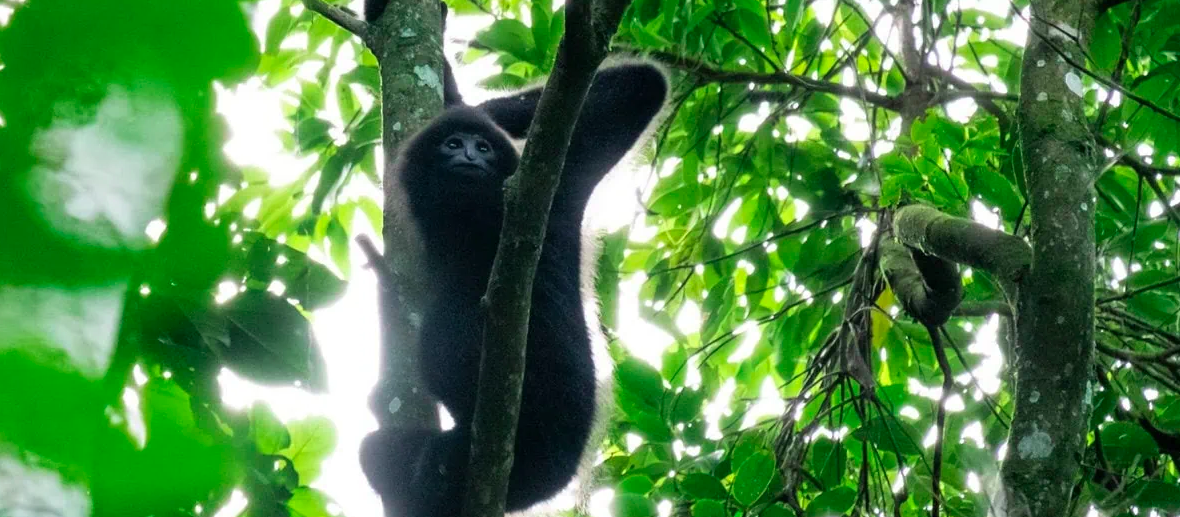
The black crested gibbon, aka cao-vit gibbon, hails from southwestern China, northwestern Laos, and northern Vietnam. They prefer higher altitudes of up to 7,800 feet. These primates favor semi-evergreen forests, tropical evergreen forests, and deciduous forests in subtropical & mountainous regions. Due to habitat loss and destruction at the hands of residential and commercial developments and the logging industry; hunting; and trapping, these gibbons are listed as Critically Endangered by the IUCN. Their numbers are estimated at a mere 47, as of 2015. These numbers are also decreasing.
First the Stats…
Scientific name: Nomascus nasutus
Weight: Up to 22 lbs.
Length: Up to 21 inches
Lifespan: Up to 40 years
Now on to the Facts!
1.) These critters move about in the trees via a method known as brachiation (the suspended body swings by the arms from 1 hold to another).
2.) They can also walk upright for extended periods of time, both on the ground and in the trees.
3.) The black crested gibbons live in smaller family groups consisting of an adult male and female pair and their offspring.
4.) Even though they can maneuver on the ground, these primates are primarily arboreal (spend their lives in the trees).
5.) Driven by the female, the mated pair will engage in choruses in the morning that can be heard throughout the forest.
But wait, there’s more on the black crested gibbon!
6.) Their calls not only aid in bond reinforcement, they also serve as an advertisement of territory.
7.) A single infant is born every 2 – 3 years, after up to an 8 month gestation (pregnancy), and is weaned by 2 years of age.
Did you know…?
These gibbons can leap from up to 32.8 feet from branch to branch!
8.) They primarily consume fruits, like figs. But they also eat the buds of leaves, and on rare occasions they’ll eat other animals.
9.) These primates exhibit both monogamous (mate for life) and polygamous (1 male mates with several females) behaviors.
10.) Leopards, large snakes, and larger birds of prey all hunt black crested gibbons.
Now a Short Black Crested Gibbon Video!
Be sure to share & comment below! Also, check out the Critter Science YouTube channel. Videos added regularly!
Want to suggest a critter for me to write about? Let me know here.
Some source material acquired from: Wikipedia
Photo credit: Hoang Van Tuan/FFI | Credit: © Hoang Vang Tuan / Fauna & Fl



